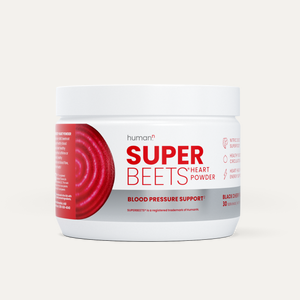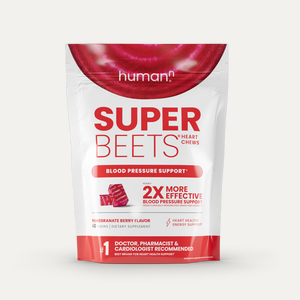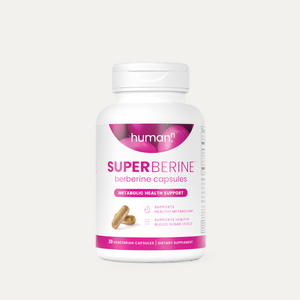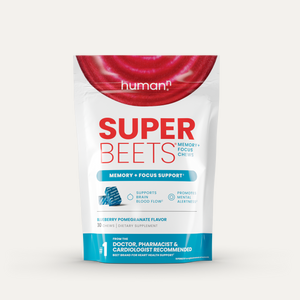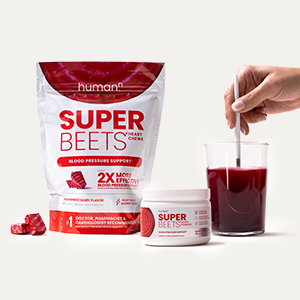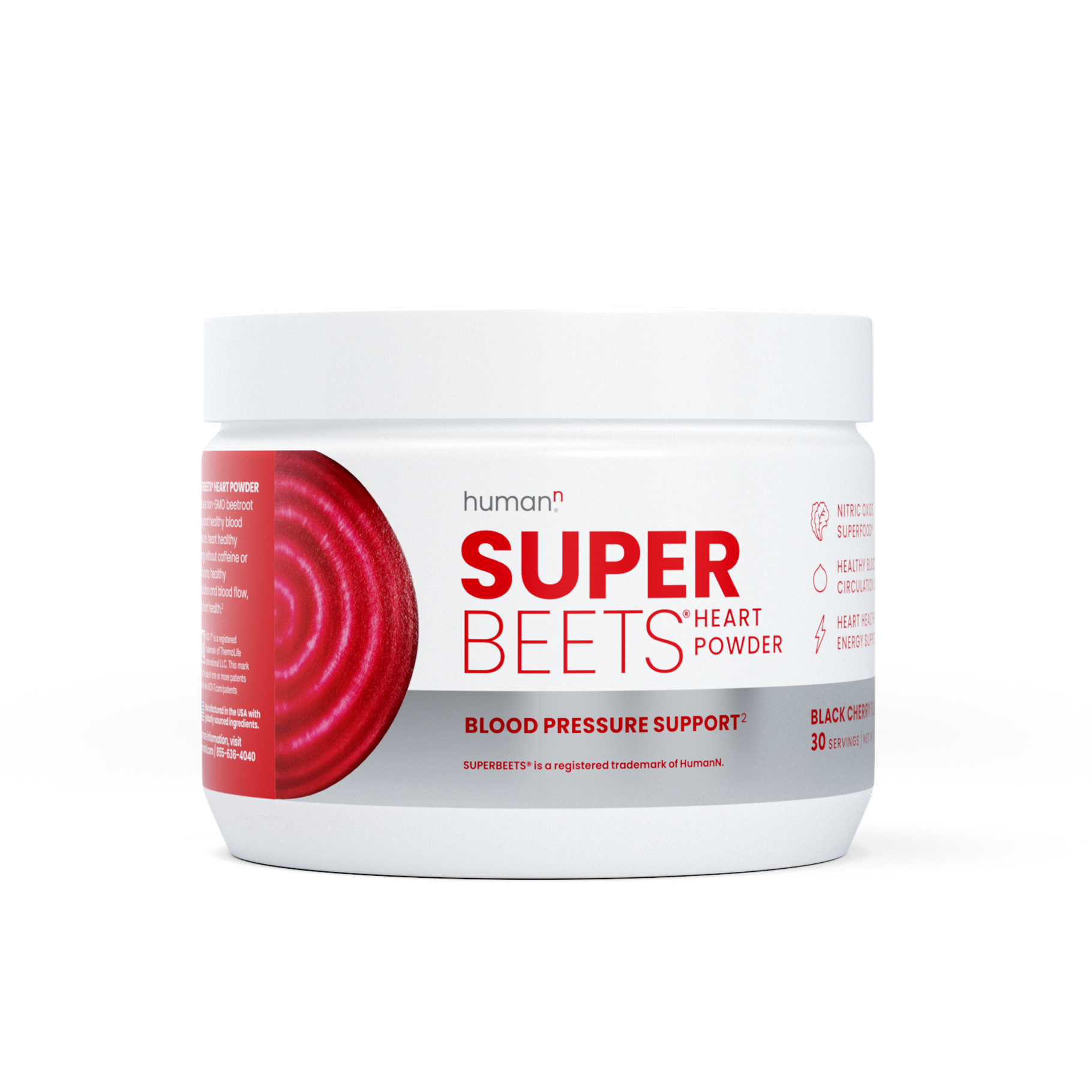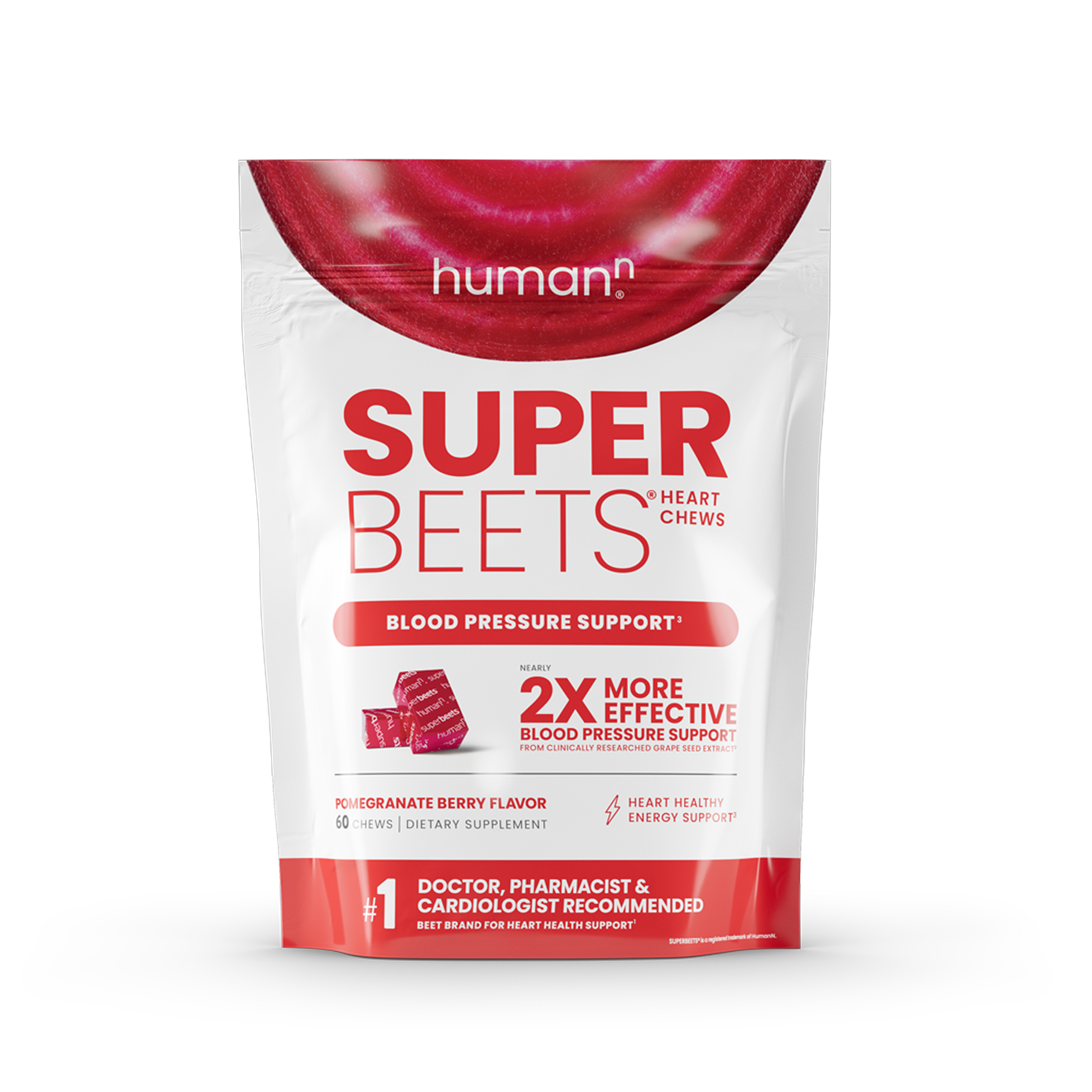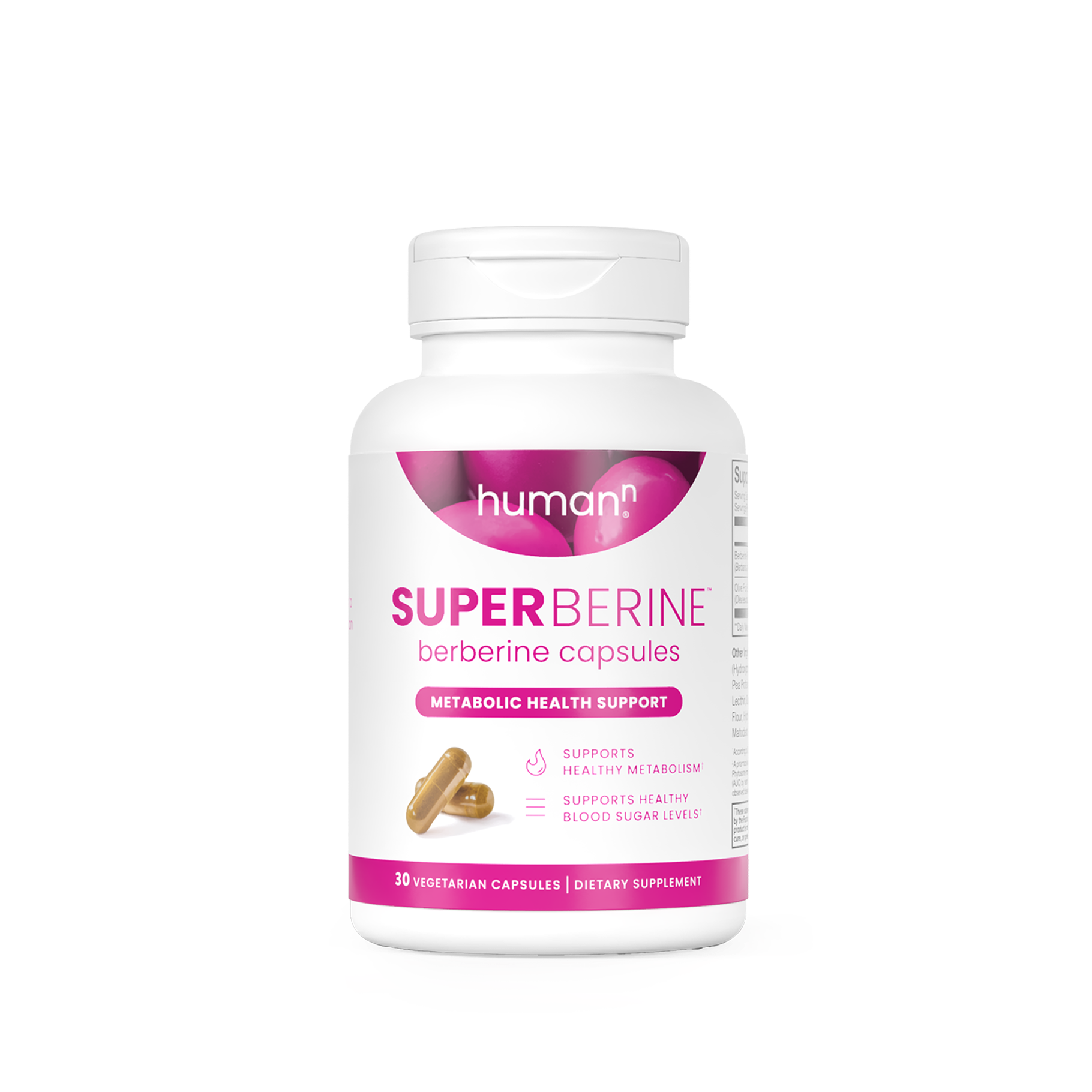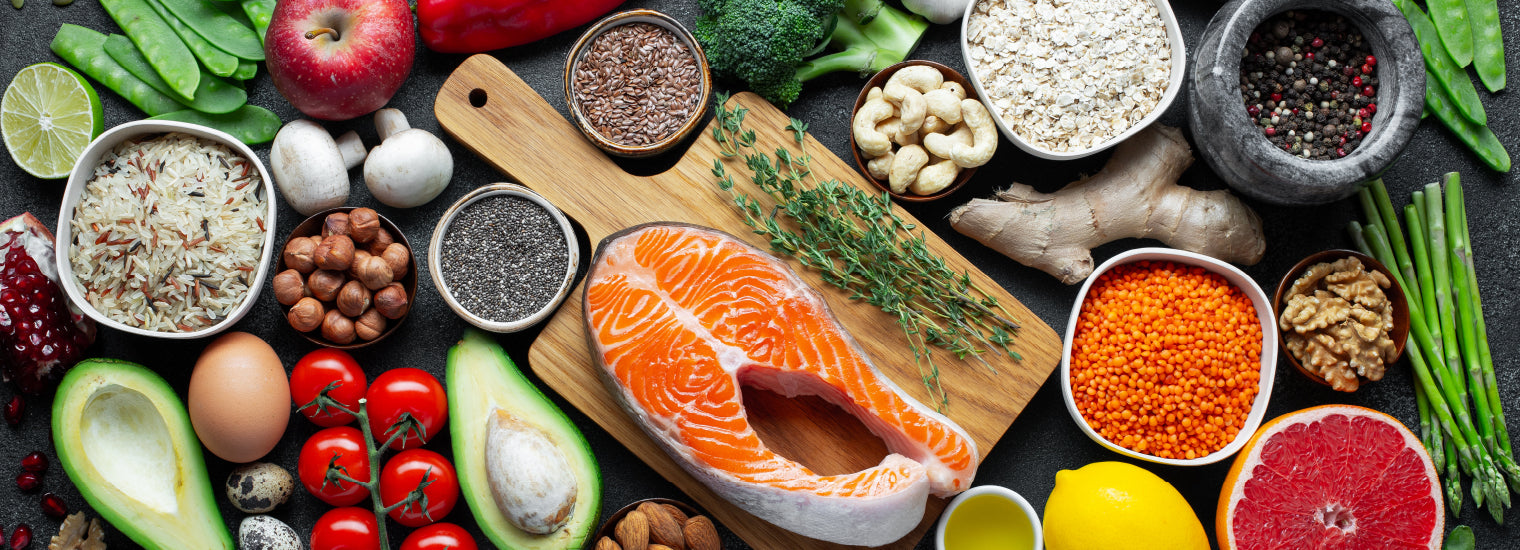Why take supplements that lower blood pressure? Couldn’t you just take a pill or prescription medicine your physician prescribed? According to the Center for Disease Control and Prevention, 75 million Americans have high blood pressure — that’s 1 in 3 adults.
Experts say high blood pressure — also called hypertension — can lead to serious health conditions.
“Hypertension is sometimes called the silent killer because it produces no symptoms and can go unnoticed and untreated for years.” Natalie Butler, R.D. L.D.
“If left untreated or uncontrolled, high blood pressure can cause many health problems. These conditions include heart failure, vision loss, stroke, and kidney disease.” Medical News Today
There are a litany of drugs (like calcium channel blockers) that can be prescribed by your health care provider to help address or prevent high blood pressure. And besides lowering blood pressure, they all have one thing in common — side effects.
- Cough
- Diarrhea or constipation
- Dizziness or lightheadedness
- Erection problems
- Feeling nervous
- Feeling tired, weak, drowsy, or a lack of energy
- Headache
- Nausea or vomiting
- Skin rash
- Weight loss or gain without trying
- Chest pain (angina)
- Eye pain or dysfunction
There might just be a better way. The Mayo Clinic site stated, “Lifestyle plays an important role in treating your high blood pressure. If you successfully control your blood pressure with a healthy lifestyle, you might avoid, delay or reduce the need for medication.”
In this article, we’ll discuss what high blood pressure is and what causes it. We’ll examine the evidence for 24 of the best foods and nutritional supplements the work for high blood pressure, plus show you some easy ways to incorporate them into your daily life.
What Is High Blood Pressure?
Your blood pressure is the rate at which your blood pushes against the walls of your arteries as it is pumped by your heart. High blood pressure happens when the pressure is considered to be too high to be healthy.
Blood pressure is measured with two numbers, diastolic and systolic pressure:
- Diastolic pressure (bottom number) is the pressure on your arteries in between heartbeats: 80 and above is considered high.
- Systolic (top number) means the pressure on your artery walls during a heartbeat: 120-130 is considered elevated and 130 and above is considered high.
Over time, high blood pressure can cause damage to the blood vessels and lead to serious health conditions such as heart disease, atherosclerosis, chronic kidney disease, stroke, and possibly vascular dementia.
What Causes High Blood Pressure?
According to the National Heart, Lung and Blood Institute (NHLBI), the main causes of high blood pressure are:
- Underlying medical conditions including tumors, chronic kidney disease, obesity, sleep apnea, and thyroid conditions
- Medicines such as birth control pills and over-the-counter (OTC) cold relief remedies
- Family history
- Lifestyle issues such as stress, too little exercise, and too much alcohol
- Age: Your risk of getting hypertension increases as you get older and your blood vessels thicken and stiffen.
- Race: African-Americans are at higher risk of hypertension than Caucasian, Hispanic or Asian adults.
- Diet: Salt, processed foods, added sugar
What should you do?
Many of the factors that influence your risk of high blood pressure, such as race, age, and family history, can’t be controlled.
But, you can control what you eat. Just like putting fresh oil in a car, you can infuse your body with sources of energy that will reduce inflammation and problems in the future.
Follow a balanced, healthy diet high in fiber, low in sodium and rich in heart-healthy nutrients such as potassium and magnesium. The DASH (Dietary Approaches to Stop Hypertension) eating plan recommends no more than 2,300 milligrams of sodium for people on a traditional diet or 1,500 milligrams for people on a low-sodium diet.
Decreasing the amount of sodium you consume — by not adding salt to your dinner and cutting out processed foods — can lower your risk of hypertension. Plus, choosing foods rich in the right nutrients can also reduce your blood pressure levels naturally. You can also add proven dietary supplements that lower blood pressure.
Foods That Lower Blood Pressure Naturally
The FDA (Food and Drug Administration) has guidelines for labeling all food, but to ensure the best quality, pesticide-free ingredients are in your food — make sure it is USDA certified organic.
Leafy green vegetables
Leafy green vegetables are high in potassium, which helps flush sodium out of your body by promoting urination. Lowering your sodium levels brings down your blood pressure as salt makes your body hold onto water, putting more pressure on your arteries.
Leafy green vegetables also contain nitrates. Studies show that eating 1 to 2 servings of foods rich in nitrates daily can reduce high blood pressure. Leafy greens are some of the top foods that help lower blood pressure.
- Spinach
- Kale
- Cabbage
- Beet greens
- Fennel
- Swiss chard
- Mustard greens
- Romaine lettuce
- Arugula
- Turnip greens
- Collard greens
Increase your intake of green leafy vegetables to 3–6 cups a day by adding them to curries and stews, blitzing them into smoothies or baking them into chips. If possible, search for organic fresh vegetables and herbs, frozen vegetables are a healthy alternative, but avoid canned vegetables as they often contain added sodium.
Bananas
Mother Nature created bananas to be a handy, healthy snack. Like other foods that lower blood pressure quickly, such as leafy greens, they are rich in blood-pressure-friendly potassium. This can help your body dispose of sodium, which can cause hypertension.
Other sources of potassium include avocado, melon, halibut, mushrooms, sweet potatoes, tomatoes, tuna, and beans. These provide sweet snacks that in moderation, won’t spike your blood sugar as much as processed sugary snacks.
According to the American Heart Association, the recommended amount of potassium is 4,700 milligrams a day. People with kidney conditions should consult with their doctor before increasing their potassium intake.
Berries
Blueberries, may be tiny, but this superfood packs a mighty punch as one of the best blood pressure-busting foods.
Blueberries, and their cousins, raspberries, and strawberries, contain anthocyanin within their rich blue and red pigment. This is a type of flavonoid — a natural antioxidant compound that may reduce blood pressure. Scientists also say that berries have vasodilatory properties. That means they help widen the arteries to make the blood flow more easily.
In a large study of more than 34,000 people with hypertension, the subjects who had the highest intake of anthocyanin from berries had an 8 percent decrease of risk for hypertension.
Try incorporating 2–3 cups of fresh or frozen berries into your daily diet by sprinkling them on high-fiber cereal or oatmeal for breakfast, or blending them into a smoothie with a banana for added potassium.
Beets
This flavorful vegetable helps raise nitric oxide levels, which may help lower blood pressure by helping to open your arteries.
The results of a study carried out in 2015 found that people with hypertension had lower blood pressure levels when they drank 250 milliliters of beet juice every day for four weeks.
Another study demonstrated that beets could be one of the key foods to lower blood pressure quickly as a positive effect was noticed just six hours after drinking beetroot juice combined with apple.
Beets can be juiced, roasted, baked or added to stir-fry and salads. If you don’t like the taste of beets or the hassle of preparation, high-quality beet supplements have the same nutritional value and can be in powdered or capsule form.
Low-Fat Milk or Yogurt
Skim milk and yogurt are healthy sources of calcium, which is known to reduce blood pressure by tightening and relaxing the blood vessels. They are also low in saturated fats, which are known to cause hypertension.
A study conducted by the American Heart Association found women who ate yogurt five times a week as part of a balanced diet were at a lower risk of developing high blood pressure. Unfortunately, men did not have the same results.
Add milk and yogurt to your shopping cart, and make sure it doesn’t contain added sugar.
Oatmeal
Eating oatmeal is a healthy way to power up for the day. It’s low in sodium and high in fiber, making it a great energy booster without raising your blood pressure levels.
Oats also contain beta-glucan, a type of fiber that’s been shown to reduce blood pressure.
Try mixing half a cup of oatmeal with half a cup of skim milk and leaving it overnight in the fridge. Before serving, stir in some other foods to lower blood pressure such as berries, seeds or cacao nibs for a delicious breakfast.
Rolled oats can also be added to meat or vegetarian burgers, or used to bread chicken in place of breadcrumbs.
Fatty Fish
Fish is good for your brain, and for preventing and reducing high blood pressure. Fish such as salmon and mackerel contain omega-3 essential fatty acids, which also reduce inflammation and lower triglycerides.
In a study published in the journal Nutrition, subjects who ate fatty fish three times a week were able to report having reduced blood pressure.
Fish is also a great source of vitamin D, which is one of the best vitamins to lower blood pressure.
Try eating fatty fish two or three times a week or supplement with fish oils.
Seeds
Seeds such as pumpkin, flax, and sunflower seeds are a great source of the minerals potassium and magnesium and an easy addition to just about any recipe.
Potassium relaxes blood vessel walls and flushes sodium out of your system, both of which help to lower blood pressure. Potassium is also essential for the functioning of electrical signals in the heart and nervous system that keep your heartbeat regular.
People who take diuretics for high blood pressure are particularly susceptible to low potassium levels as these drugs often result in the mineral being lost through urination.
Magnesium is crucial for the effective regulation of a wide range of body systems. It helps blood vessels relax and assists with the transportation of other minerals such as potassium and calcium around the body.
In a study of 110 patients with peripheral artery disease, subjects were given 30 g of milled flaxseed or placebo in food every day for 6 months. The flaxseed group had 10 mm Hg lower systolic blood pressure (SBP) and 7 mm lower diastolic blood pressure (DBP) than the control group.
Seeds can be added to salads, yogurt, oatmeal, or granola or combined with oats and dates to make a healthy snack bar. Try to add 1 – 2 tablespoons to your diet each day.

Garlic
Garlic isn’t just good for keeping vampires away. It’s also a natural antibiotic and it can help improve high blood pressure.
Like beets, garlic is high in nitric oxide, which can help to widen the arteries and enable the smooth muscles to relax, making it easier for your blood to flow, as well as reducing the pressure on the artery walls.
In one study, 210 patients with stage 1 essential hypertension were divided into 7 groups. Five of the groups were given either 300/mg, 600/mg, 900/mg, 1200/mg or 1500/mg garlic in tablet form for 24 weeks, the last two groups were given a placebo or atenolol, a beta-blocker commonly used as treatment for high blood pressure. The people who were given garlic tablets showed greater reductions in both their systolic and diastolic blood pressure levels than both the atenolol and the placebo groups.
Most clinical trials use a dose of 600-1,200mg of garlic a day. Raw garlic can be toxic if you eat a lot of it, so don’t let it exceed 5% of your diet.
Garlic can be added to stir-fry, roasted with meat or vegetables, and used instead of salt as a healthy seasoning.
Chocolate
A review of 16 trials found that dark chocolate can reduce high blood pressure because it contains flavanol, the antioxidant compound that raises your nitric oxide levels and widens blood vessels.
Before you reach for a candy bar, however, remember to choose chocolate with at least 70 percent cocoa. Keep in mind you only need about an ounce a day.
Pistachio Nuts
Studies have shown that pistachio nuts can help lower blood pressure by preventing the tightening of the blood vessels — known as peripheral vascular resistance — and by reducing the heart rate.
Other nuts, such as almonds, may have the same effect.
As well as starting to snack on whole pistachios, they can also be incorporated into protein balls, mixed with oats and seeds to make a healthy granola bar, stirred into salads, or blended into pesto.
Olive Oil
Extra virgin olive oil (EVOO) contains polyphenols, compounds that fight inflammation and reduce blood pressure by keeping your blood vessels healthy and artery walls elastic.
One study compared hypertension in women who were on a polyphenol-rich Mediterranean-style diet with women who didn’t eat any polyphenols over four months. The women on the Mediterranean diet had much lower blood pressure.
You can cook with EVOO, dunk your bread in it instead of butter, or mix with a dash of balsamic vinegar as a healthy salad dressing.
Pomegranates
The results of one study showed that consuming almost a cup and a half of pomegranate juice once a week for four weeks reduced blood pressure significantly. This may be because pomegranates are a powerful antioxidant or because they contain potassium and polyphenols.
Pomegranates can also be stirred into your breakfast or added to salads. If you choose to drink pomegranate juice, make sure it doesn’t contain added sugar.
Kiwis
If you like kiwis you’re in luck. Kiwis are rich in lutein, a powerful antioxidant that fights free radicals that cause high blood pressure. Kiwis are also high in potassium which, as we have seen, can help lower blood pressure.
In a study involving 118 people with moderately high blood pressure, subjects were given either 3 kiwis or an apple a day. After 8 weeks, the people in the kiwi group had lower systolic and diastolic blood pressure than the control group.
Snack on kiwis because of their vitamin C contents, which is known to reduce blood pressure due to its antioxidant properties. The recommended daily intake of vitamin C to reduce hypertension is 500 milligrams a day.
Watermelon
Studies have shown that watermelon can help reduce the symptoms of hypertension. Scientists think this is because watermelon contains citrulline, an amino acid that promotes the production of nitric oxide. Nitric oxide relaxes blood vessels and arteries, making it easier for your blood to flow.
In a study reported in the American Journal of Hypertension, researchers found that subjects who took watermelon extract supplements for six weeks saw a reduction in their blood pressure.
Watermelon can be easily incorporated into your diet as a refreshing snack or drink. It can be added to salads or even consumed as a chilled soup.
Lentils
The results of animal studies suggest that pulses such as lentils could block age-related hypertension and even reverse changes in blood vessels that are a result of high blood pressure. This is probably because of their antioxidant properties and high-fiber content.
Human studies are needed to determine just how effective lentils are in the reduction of blood pressure levels.
Nutritionists recommend that everyone over the age of 14 should eat one and a half cups of beans, peas or lentils a week.
Lentils can be consumed in soups or used to replace meat in burgers and pasta sauces.
Hibiscus
There’s nothing quite like a good cup of tea.
The results of a study published in the Journal of Nutrition found that drinking three cups of hibiscus tea a day for six weeks reduced the blood pressure of people with mild hypertension.
Hibiscus tea contains the antioxidants polyphenols and anthocyanins, which are known to reduce blood pressure.
Supplements to Lower Blood Pressure
It’s not always easy to be sure that you’re getting all the nutrients you need from your diet, particularly when you take into account modern farming methods and how far foods have traveled before they reach your plate.
If you suspect you have high blood pressure, you may want to consider taking supplements to lower blood pressure and maximize your nutrition so that your body gets all the nutrients it needs to be healthy.
Remember, before adding any specific supplements to your diet, see your doctor if you have an existing health condition or take any medications. Some supplements are known to interfere with blood pressure medications such as beta-blockers and ACE (Angiotensin Converting Enzyme) inhibitors.
So, which are the best supplements to lower blood pressure?
Magnesium
One study suggests that 75 percent of Americans don’t consume enough magnesium.
As you get older, your body finds it harder to absorb magnesium and if you have a magnesium deficiency, you are more likely to have hypertension. The good news is that magnesium supplements are widely available and affordable.
Studies have shown that bringing your magnesium levels back to normal can stabilize your blood pressure.
The recommended daily allowance is 400 milligrams.
Potassium
Increasing potassium intake has been shown to reduce blood pressure levels, especially if combined with a reduction in sodium.
If you have a potassium deficiency, your body will try to retain this essential mineral. As a result, it will also retain water, which may lead to a rise in blood pressure.
There’s no recommended daily allowance (RDA) for potassium, but Mayo Clinic recommends 1,600–2,000 milligrams a day.
If you have a kidney condition, increasing your potassium intake can be harmful. Be sure to consult with your doctor before making any changes in your diet.
Fish Oil Supplements
Omega-3 fatty acids play a crucial role in most of your body’s essential functions.
Research suggests boosting your omega-3 levels may also lower your blood pressure by reducing the amount of LDL (bad cholesterol) in your blood.
There’s no official RDA for omega-3s, but a standard dosage is 250–500 milligrams a day.
Vitamin D
It is very common for people who don’t live in sunny climates to have a vitamin D deficiency. This can have a wide range of health consequences, including putting you at higher risk of hypertension and cardiovascular disease such as heart attack.
The recommended daily allowance for vitamin D is 4,000 IU.
Vitamin B9
If you’re looking for other vitamins for high blood pressure, consider vitamin B9 — also known as folic acid or folate. Studies have shown that it helps to reduce hypertension.
Folic acid is particularly effective at reducing hypertension in pregnancy, but it has been shown to have a positive effect on high blood pressure for both men and women.
The RDA for folate is 400 micrograms a day. For women who are pregnant, or hoping to become pregnant, the RDA is 400–800 micrograms a day.

CoQ10
CoQ10 — coenzyme Q10 or ubiquinone — is known as a powerful antioxidant that has been shown to be one of the top supplements that lower blood pressure.
A typical daily dosage of CoQ10 is 90–200 milligrams.
Try our new SuperBeets Heart Chews Advanced with CoQ10.
Garlic
If you don’t want to increase the amount of garlic you eat, consider taking garlic supplements — 600-1,200mg a day. The heart health benefits of this ancient remedy have been used for centuries to aid blood flow, and recent studies have shown it can also reduce blood pressure.
7 More Tips to Reduce High Blood Pressure
In addition to eating high blood pressure-busting foods and maximizing nutrition with supplements that lower blood pressure, what else can you do to reduce high blood pressure?
Try these seven top tips for reducing hypertension:
- Have your blood pressure checked at least once a year. Any problems with your blood pressure readings will be diagnosed and your doctor can advise about lifestyle changes or medication as necessary. Talk to your doctor about home blood pressure monitoring kits if testing more frequently would put your mind at rest.
- Quit smoking. If you smoke, quit to reduce the buildup of fatty substances inside the arteries, known as atherosclerosis, which makes it harder for your blood to flow.
- Minimize alcohol consumption. Women should limit their alcohol intake to one drink a day; men should have no more than two. Excessive alcohol consumption raises blood pressure and stops blood pressure medications from working effectively.
- Keep active. The Mayo Clinic recommends 30 minutes of exercise a day to reduce hypertension.
- Manage stress. Stress is a significant contributor to high blood pressure. During periods of stress, you’re more likely to reach for unhealthy foods, drink too much alcohol, and not get enough exercise — all contributing factors to high blood pressure.
- Keep your weight under control. According to the Mayo Clinic, if you’re overweight, reducing your weight by just 2.2 pounds may reduce your blood pressure.
- Cut out processed foods. It’s especially important to cut those with high sodium content.

